Rayonier has invested millions of dollars to open more than 200 miles of stream habitat to salmon in the Pacific Northwest. We take you on site to one of our restoration projects.
HOQUIAM, Washington—A forest stream went more than a century without salmon after a road crossing was built above it. Then recently the small pipe that led the stream under the road was replaced with a bridge that allowed water to flow more freely—and suddenly the stream came to life.
A few weeks after the bridge project was finished, Matt Poppe, a Rayonier forest engineer, pulled a team of contractors off a nearby worksite to see the impact of the bridge they built.
“This is why we’re all doing this,” he told them. “There haven’t been fish in this stream for 100 years, and here we are seeing large salmon in this stream right now.”
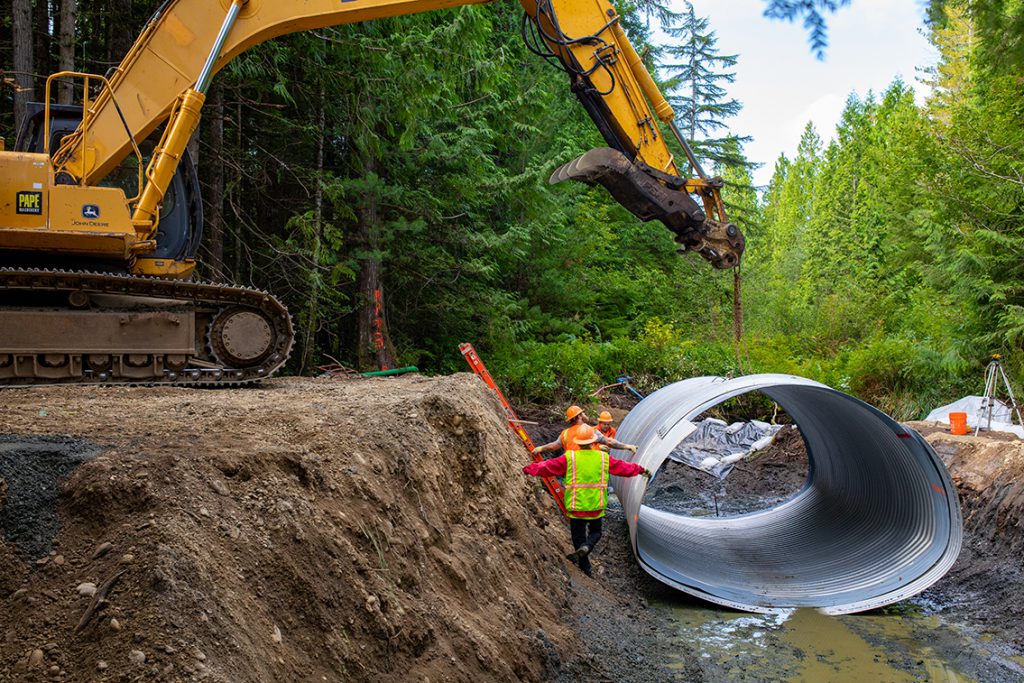
That was just one of the 750 upgrades Rayonier has made to culverts and bridges on its property over the last 20 years to help address Washington’s declining salmon population. The effort is guided by Forests & Fish, one of the most comprehensive environmental laws in the U.S., which protects 60,000 miles of streams across Washington’s state and private forests. It uses the latest scientific standards to ensure the best possible habitats for salmon to live and spawn in, as well as other amphibious creatures that depend on upland streams.
In addition to replacing insufficient culverts and bridges to improve salmon habitat, Rayonier also improves forest roads to reduce the amount of sediment making its way into streams and, when possible, closes nonessential forest roads altogether.
Since the law passed in 1999, Rayonier has:
- Opened 220 miles of fish habitat
- Upgraded 750 culverts and bridges
- Invested $22 million in salmon habitat restoration
The long process to get a stream’s profile just right
The process to set even one project into motion can take a full year before building the structure during the “fish window,” when upland streams are naturally slowed and work will be least likely to disturb the fish, from July 15-Sept. 30. Matt must undergo months of permitting application reviews as well as a review process with stakeholders including environmental agencies and representatives of the local Native American tribes.
Portia Leigh, an area habitat biologist for the Washington Department of Fish & Wildlife (WDFW), often previews the proposed projects and advises Matt on how to make the pass-through simulate the rest of the streambed. She sometimes advises him to leave woody debris in the streambed or to drop hay seeds for vegetation, which will slow the water flow, enhance shade, and create pools and protective areas. That gives smaller salmon places to hide, spawn and grow before they go downstream into more open waters, says Portia, shown below.
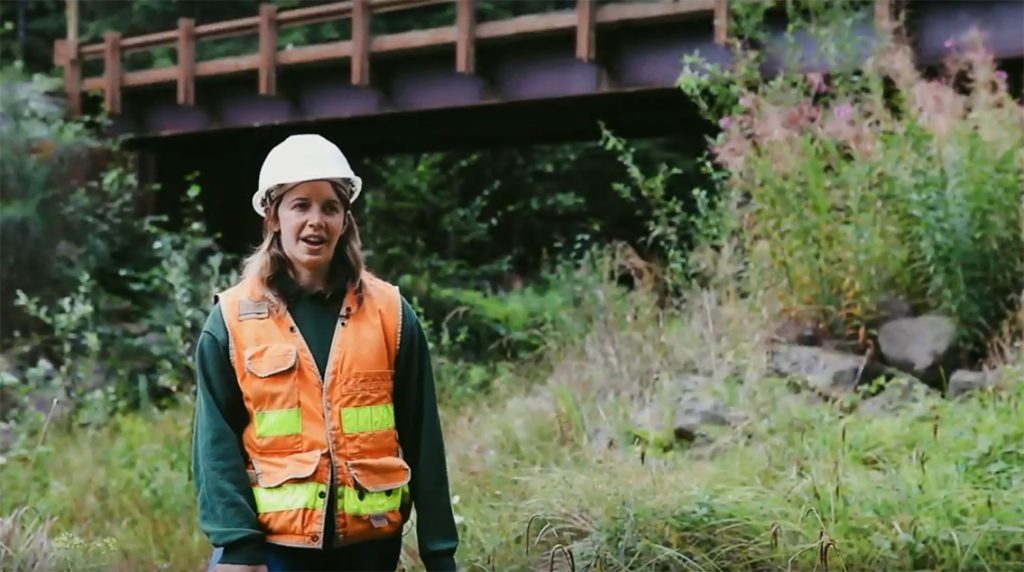
Matt also conducts a “stream survey” with the partners to ensure the new passthrough simulates what the streams were like before a road passed through them. He explains that those who built the roads in the past (some of these roads are more than a century old) didn’t know the culverts they were using were not sufficient to maintain the streams below the roads.
“People in those days were doing their best with what they knew. All they worried about was getting the water across, and they thought the fish would come no matter what,” Matt says. “Many of the culverts that were put in these streams were just rolled into the hole. In those situations, it created an artificial stream channel.”
Today, the work to determine the proper placement for a culvert is much more complex. During the stream survey, Matt and the partner agencies will view the streams 100 feet above and below the project area to understand what the stream would have done naturally.
“We’ll come back and mimic that with our design. It can drastically change where that structure is placed and at what elevation it’s placed,” explains Matt, shown below.
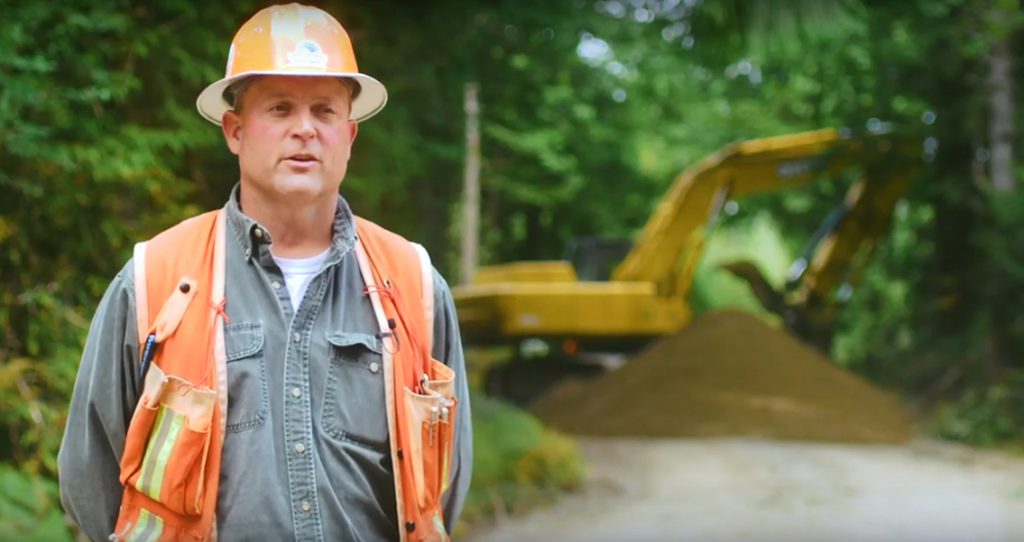
Handling culvert and bridge replacements with care
Culvert and bridge projects are handled with extreme care. Before any digging begins, a watertight pipe is used to divert the stream around the project area, and fish screens are placed to ensure fish don’t come into harm’s way. Work to place culverts or bridges only begins after the project area is fully dewatered.
“The allowable amount of sediment contamination in the stream is zero. We’re mindful of that 100 percent of the time,” Matt says.
During a recent project, he pointed out a crawfish who was curiously swimming near the diversion pipe in clear water, just feet away from the project, a testimony to how well the diversion pipe worked to keep the water clear.
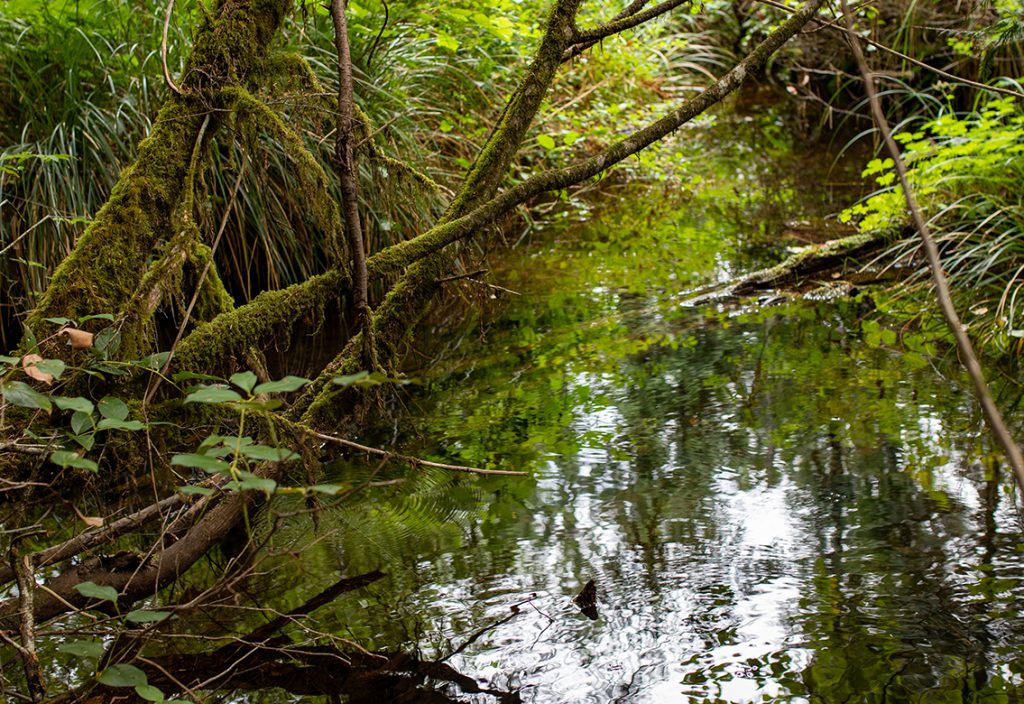
At the same time, Kelly Dunkerson, site supervisor for John J. Karnas Co., was placing a 40-foot-long culvert into the streambed. The Hoquiam-based company has contracted with Rayonier for more than 30 years and has served as a knowledgeable partner in the culvert and bridge replacement projects. While this particular culvert’s circumference was 10 feet around, about a third of that would be backfilled with streambed material to match the rest of the stream.
From start to finish, the projects typically take about a week, and then waterflow returns to normal. It can be shocking how quickly the streams attract salmon who have not been there in years. Portia, of WDFW, says they can sense the change in the waterflow once the work is done.
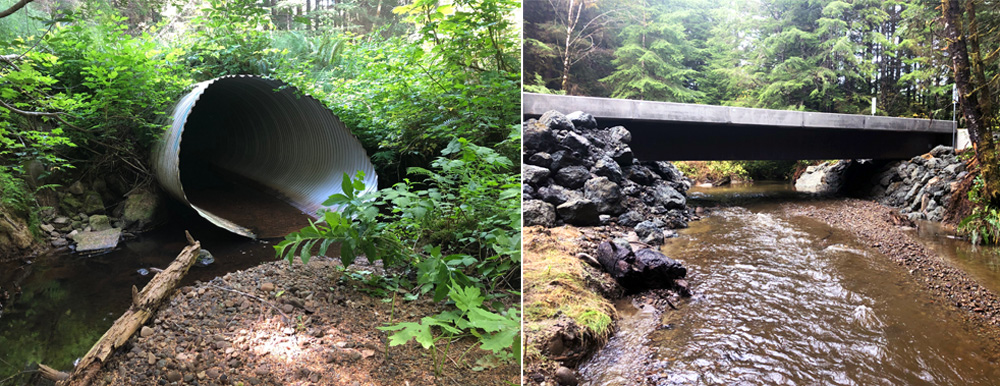
Matt says Rayonier has about 40 more miles of habitat to open and 125 more structures to upgrade in order to fully comply with Forests & Fish, but the work won’t stop there.
“As we build new roads, eliminate roads, stream enhancements change and other dynamics change, we’ll continue to do this work,” he says.
Matt’s proud of the work Rayonier is doing to help restore and improve salmon habitat in the forest.
“I love what I do every day of the week,” he says.
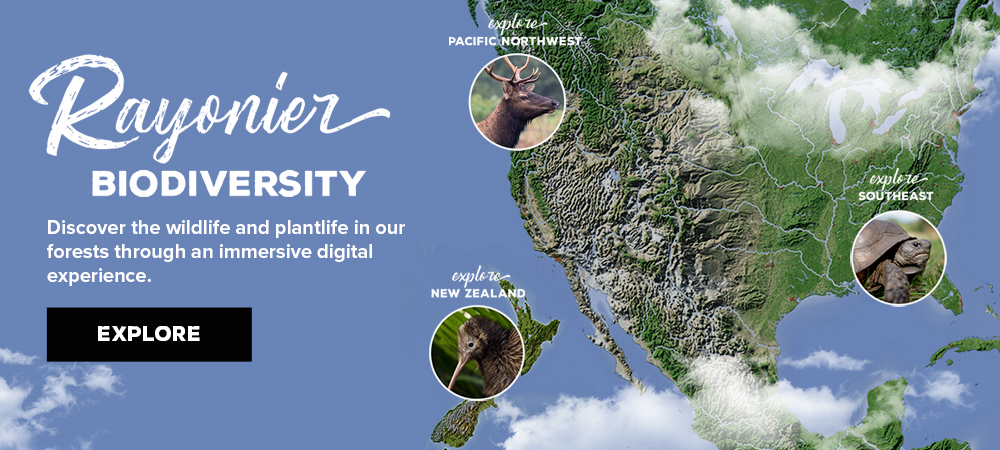









Join the Conversation
I am very impressed with the efforts you have made to restore the salmon habitat in the Pacific Northwest. I have two grandchildren who belong to a Salmon Club in Edmonds H.S. and they both want to be conservation biologists. They monitor the streams and maintain data. Do you have any mentoring programs for high school students? College scholarships? Can you send me the contact info for Portia Leigh so that I can forward it to my granddaughter who is in a Baccalaureate Program and looking at colleges with conservation biology programs?
Thanks for your interest, Carol! As far as Rayonier goes, we have college-level internships in which forestry students are able to experience a number of forestry roles. We have information about that program at https://www.rayonier.com/careers/internships/. At the high school level, we have class visits in the forest from time to time and also come to schools to speak about forestry. We will pass your contact info on to Portia. Thanks again!